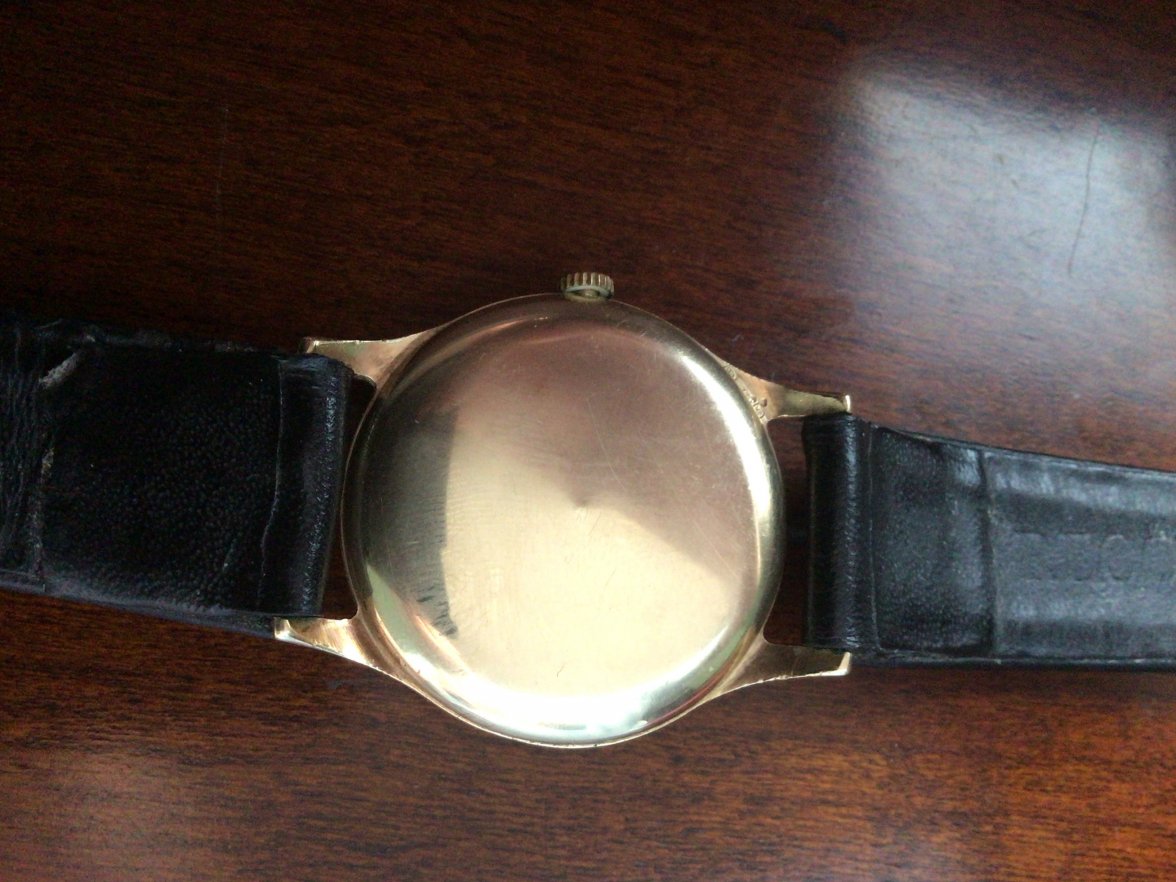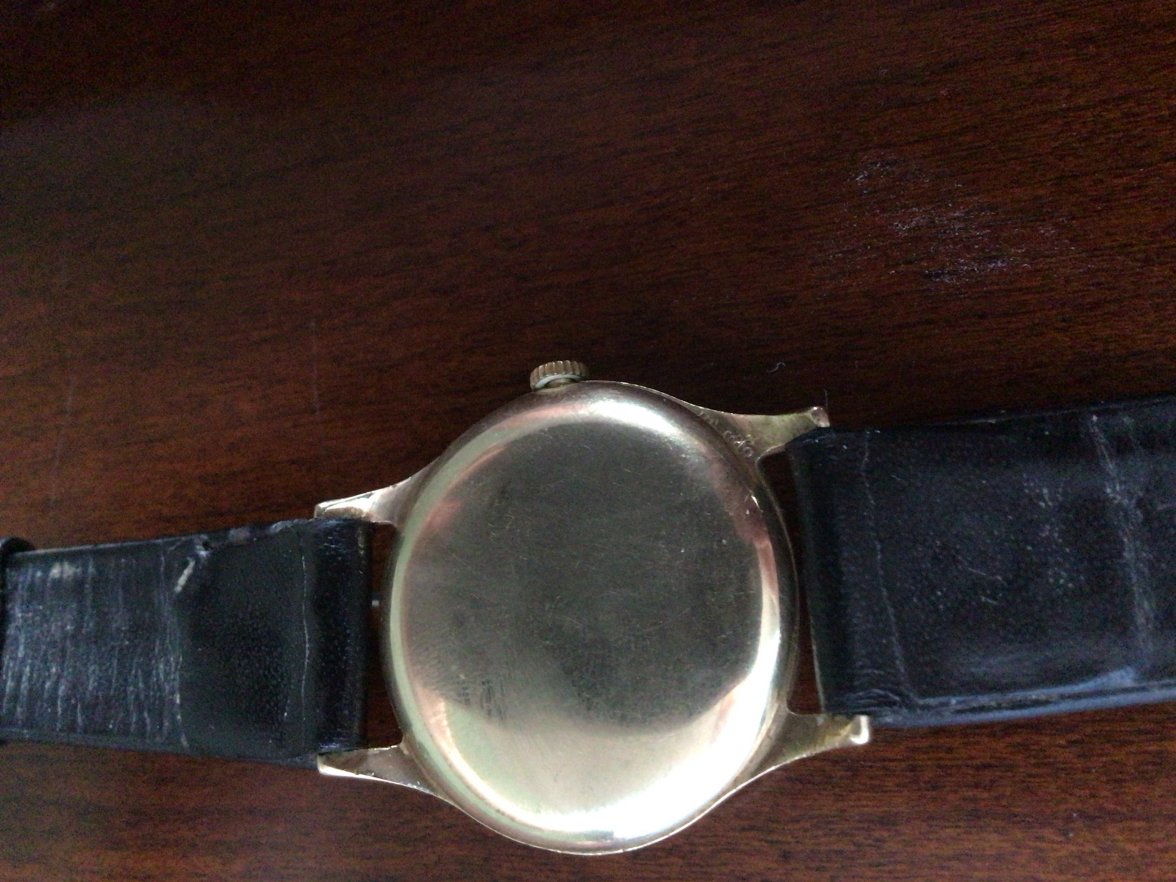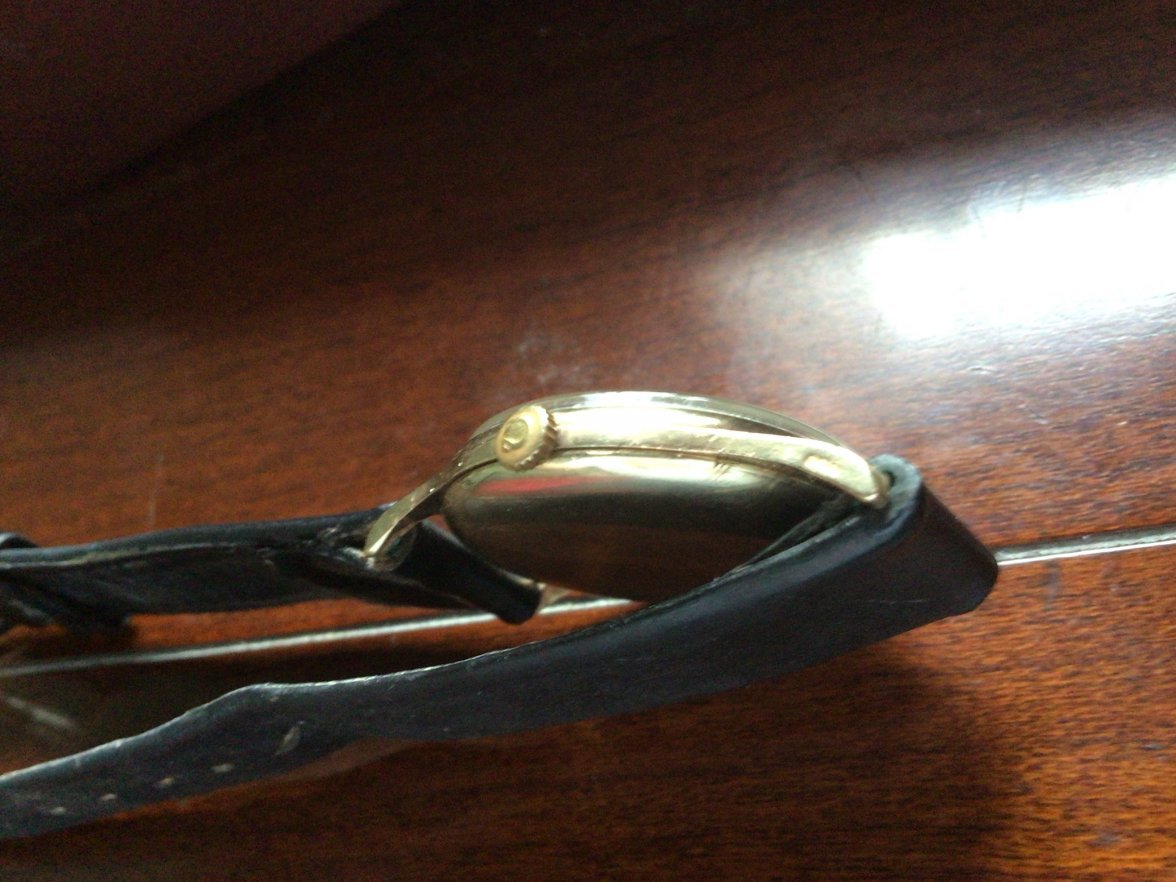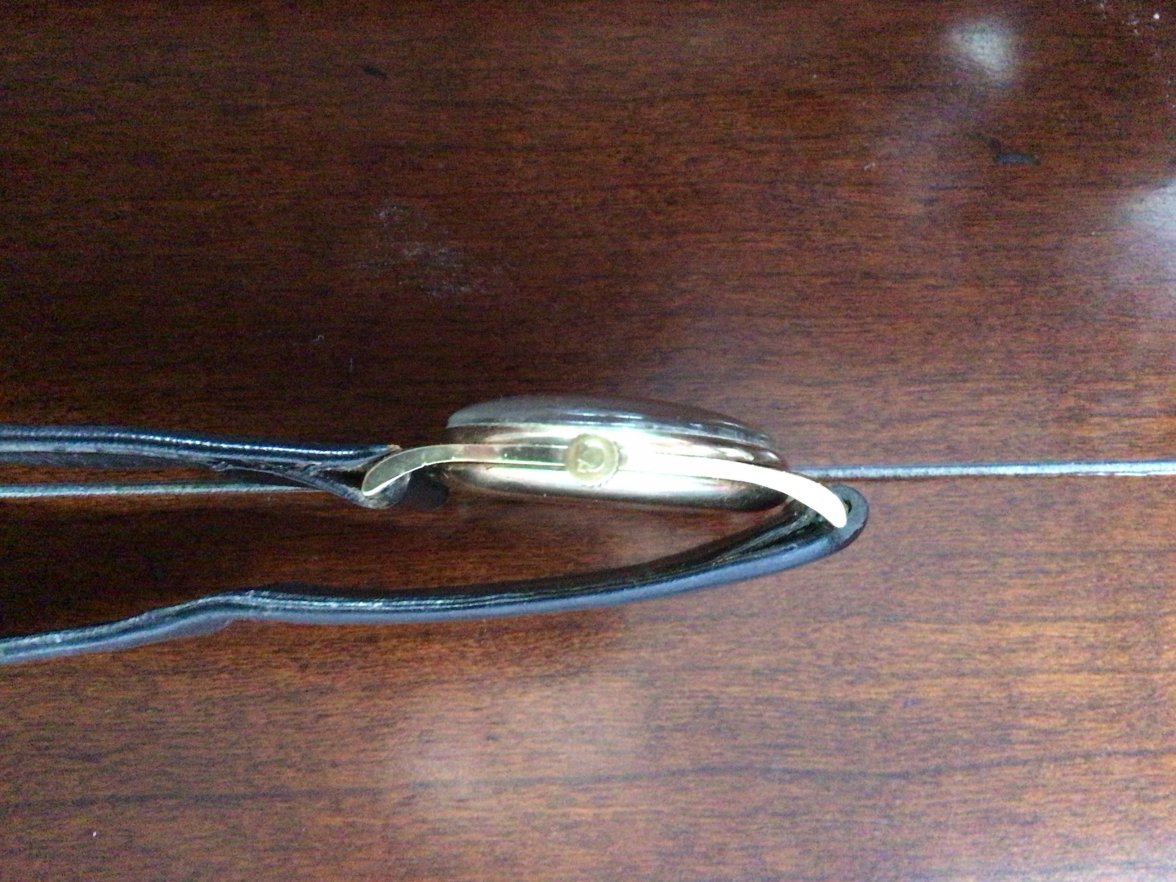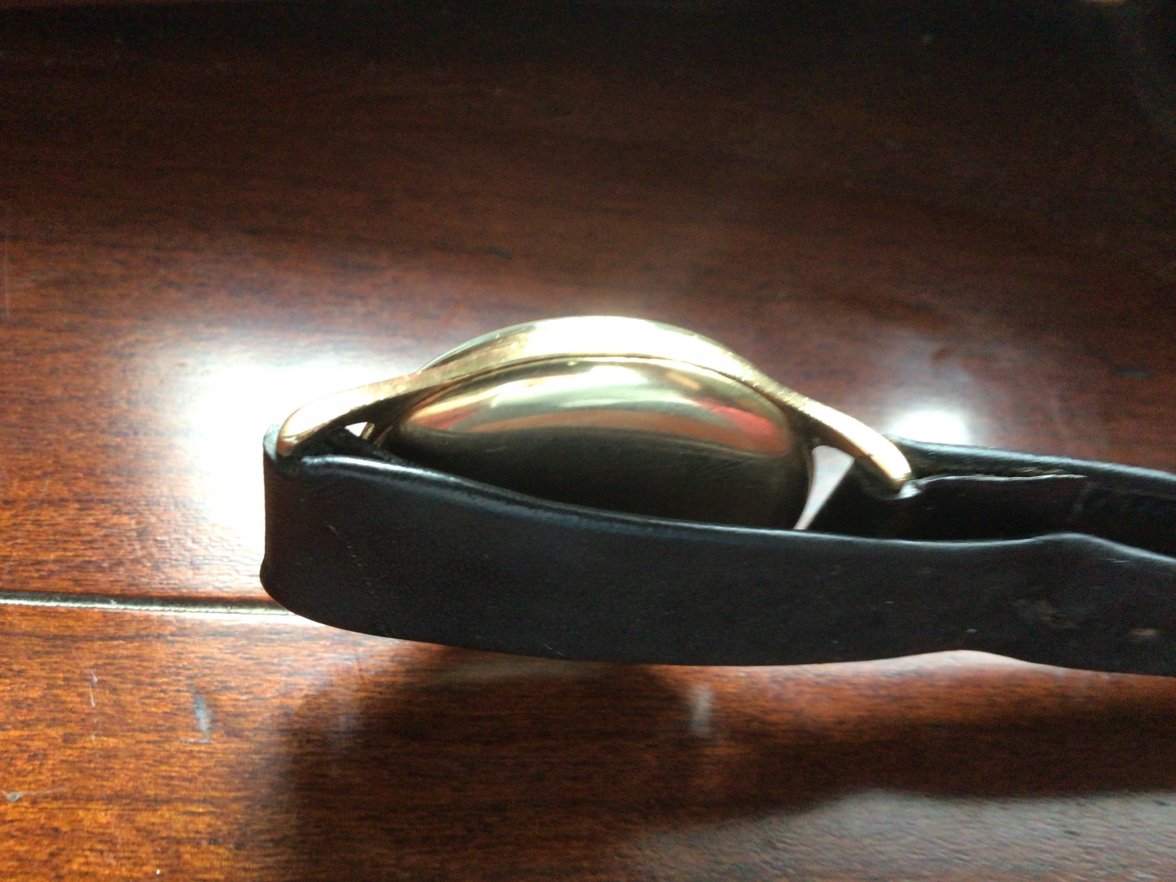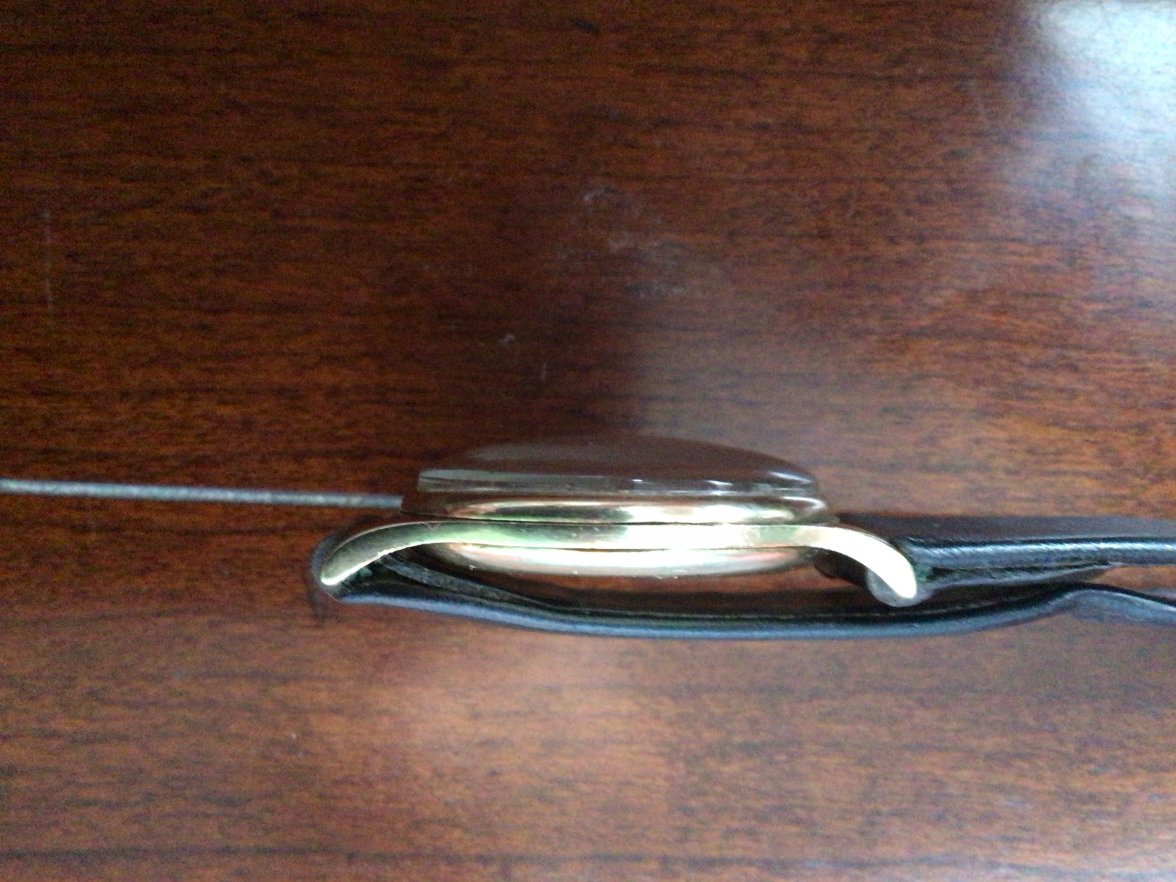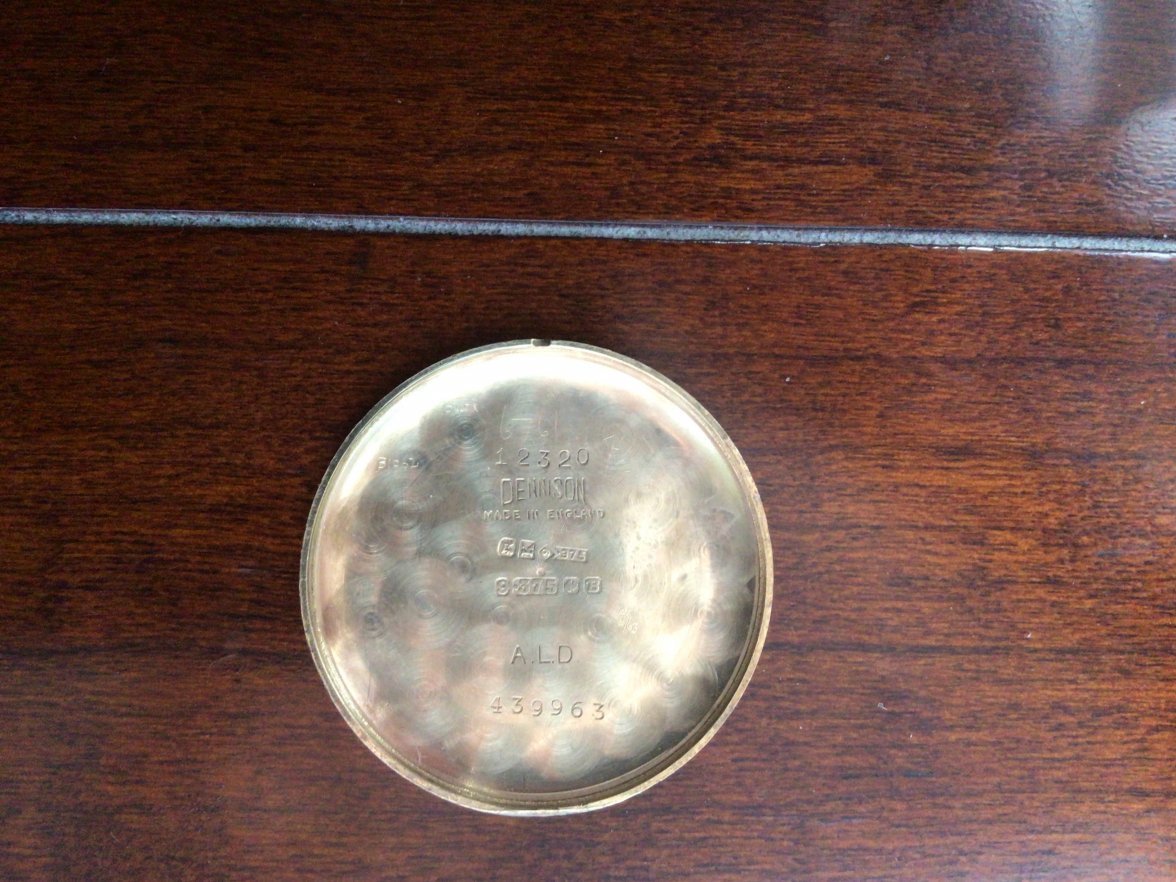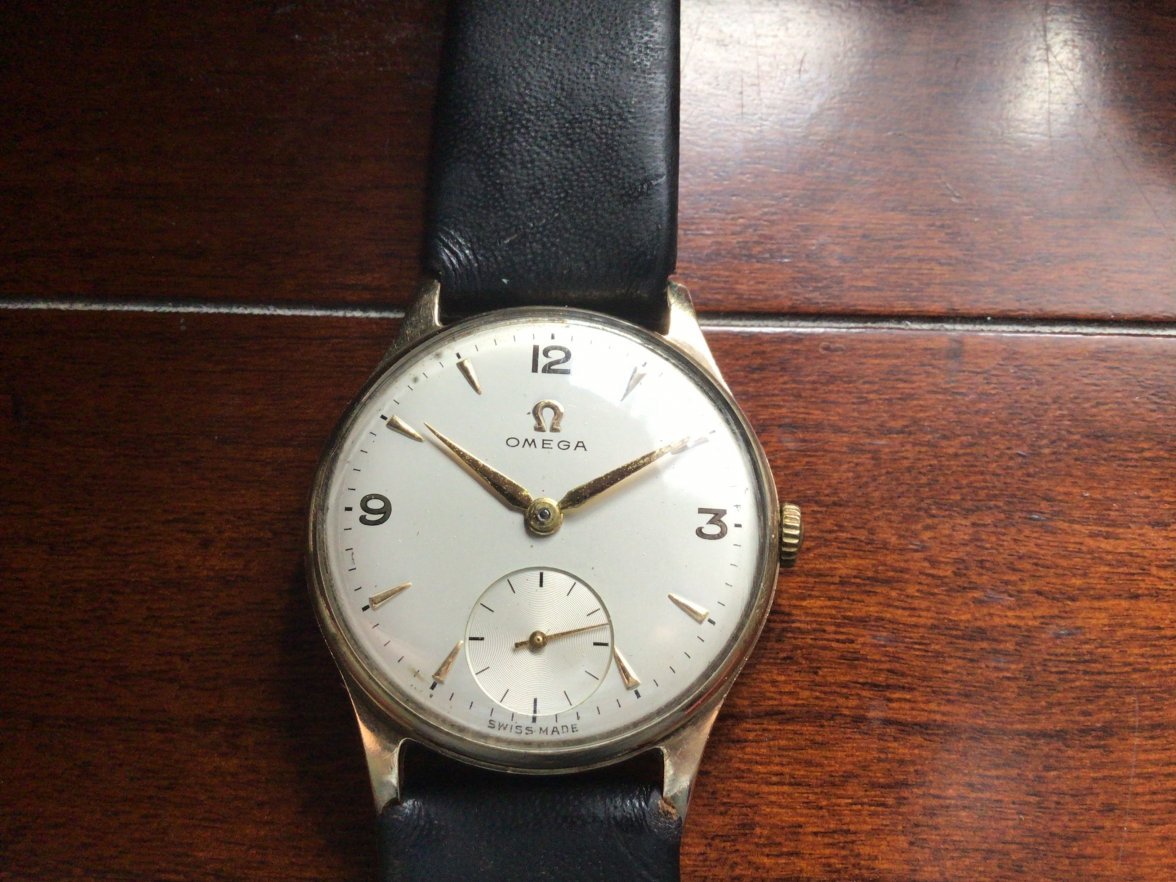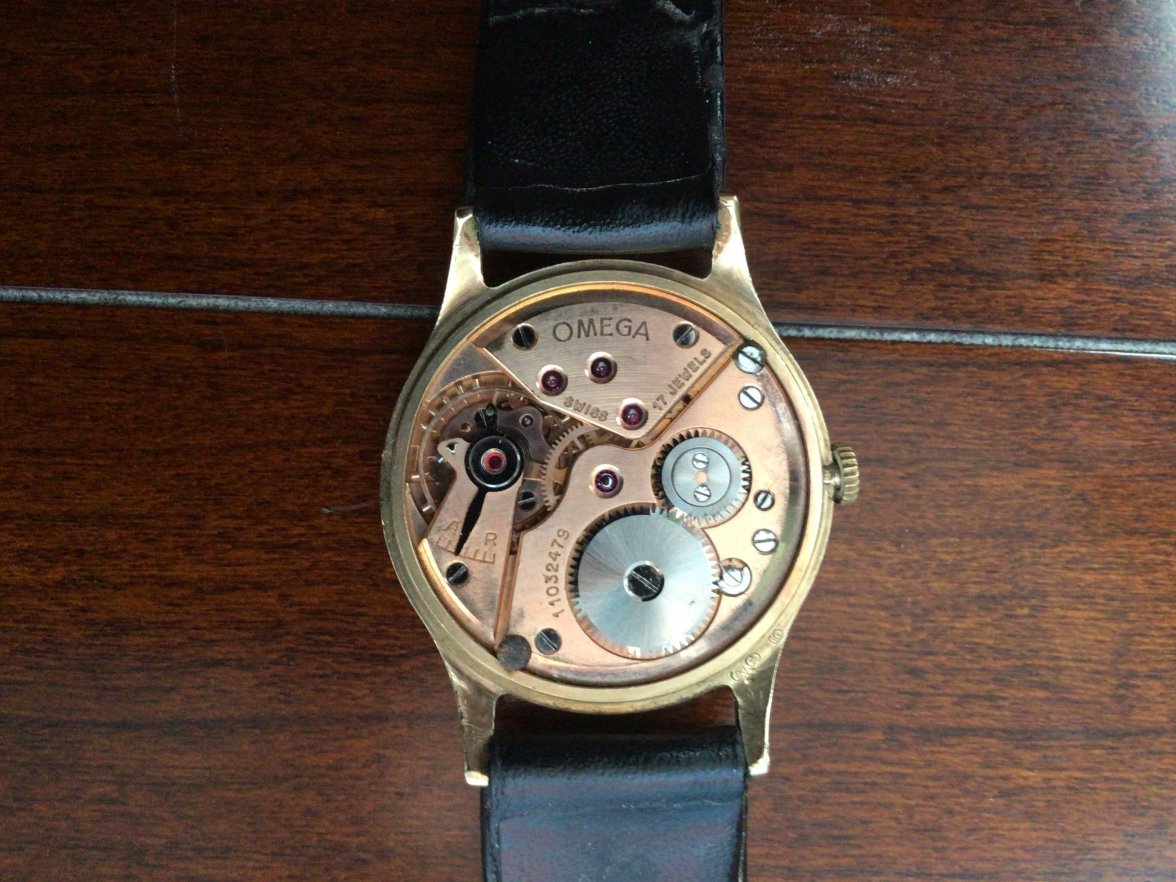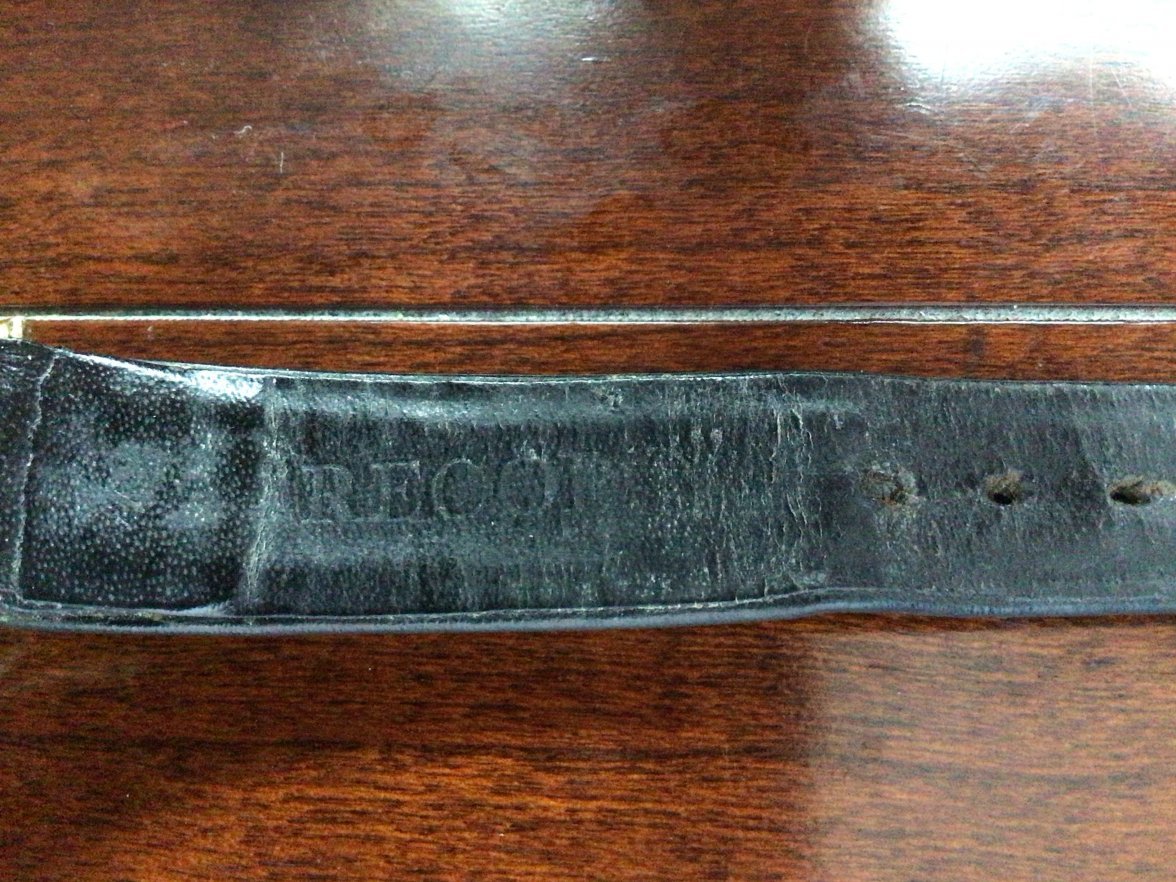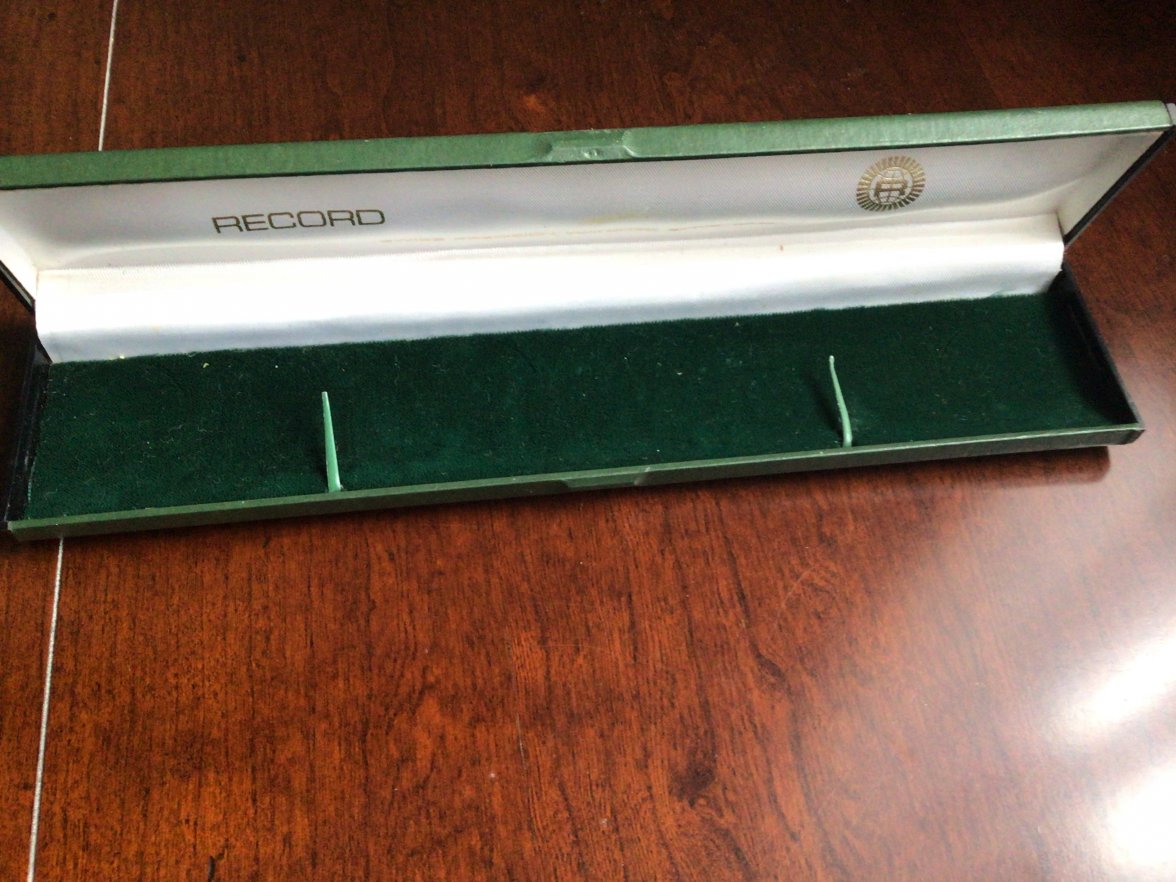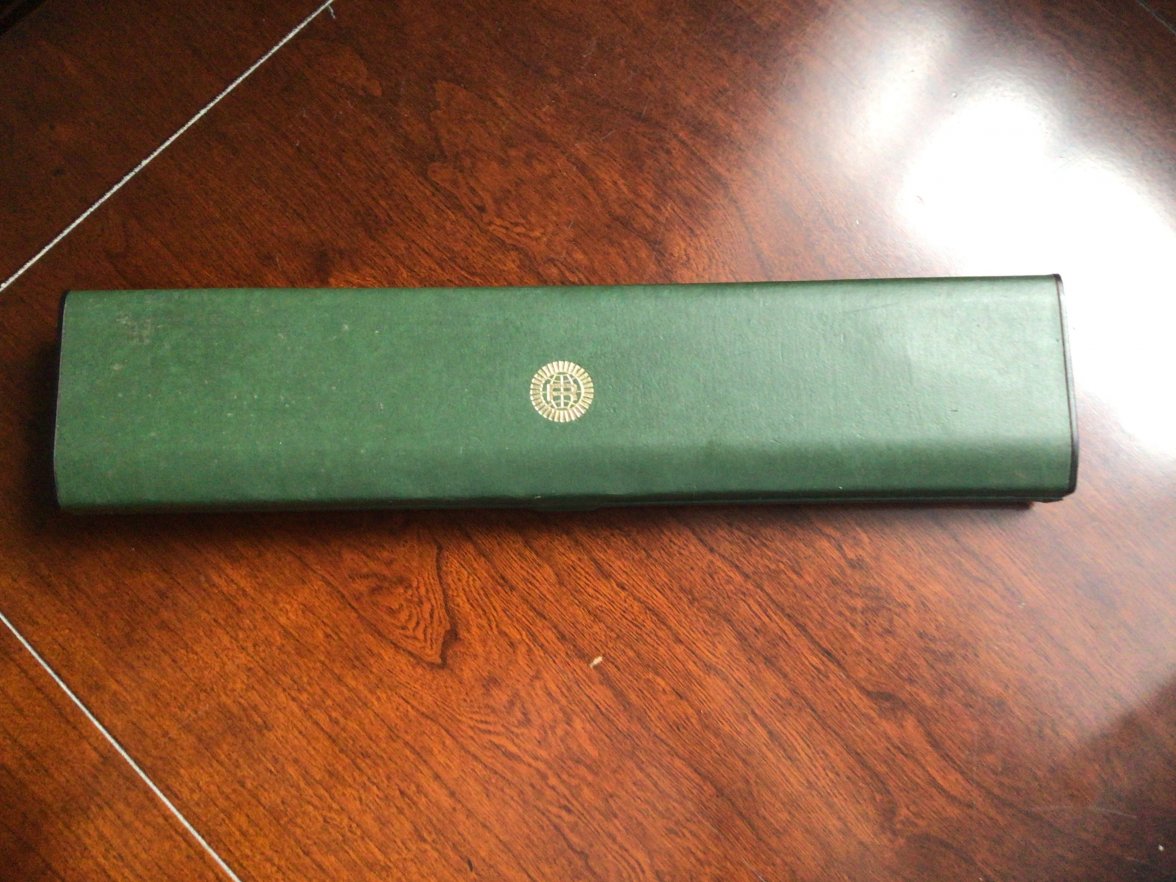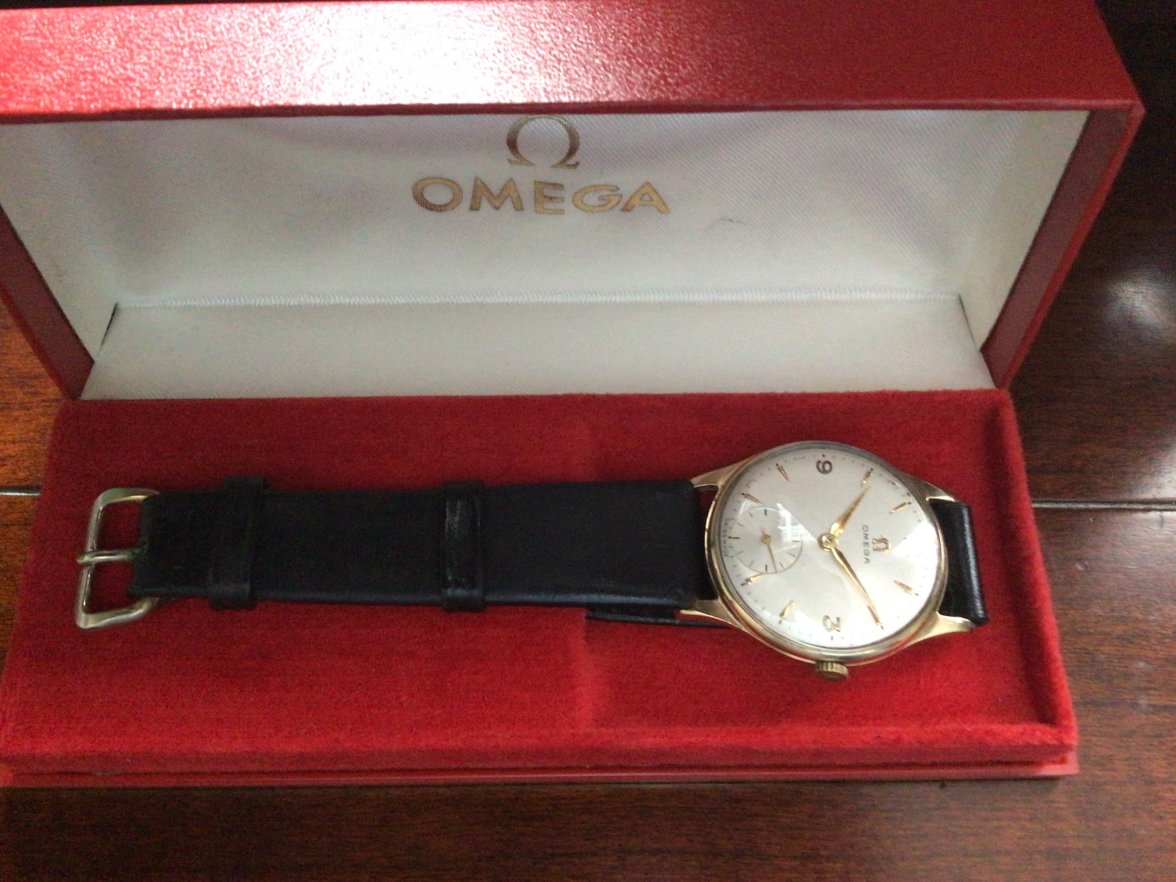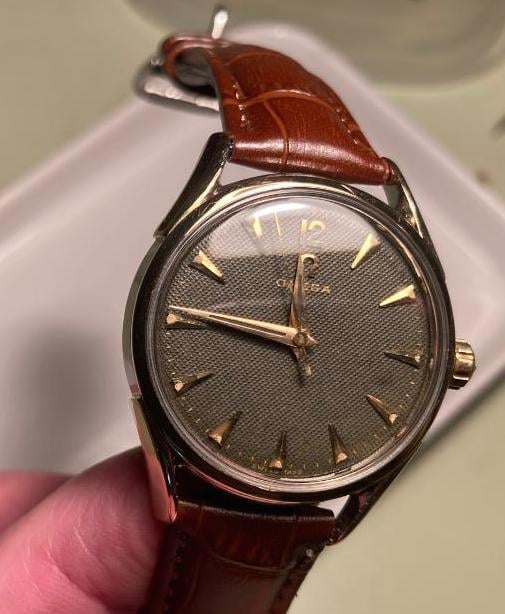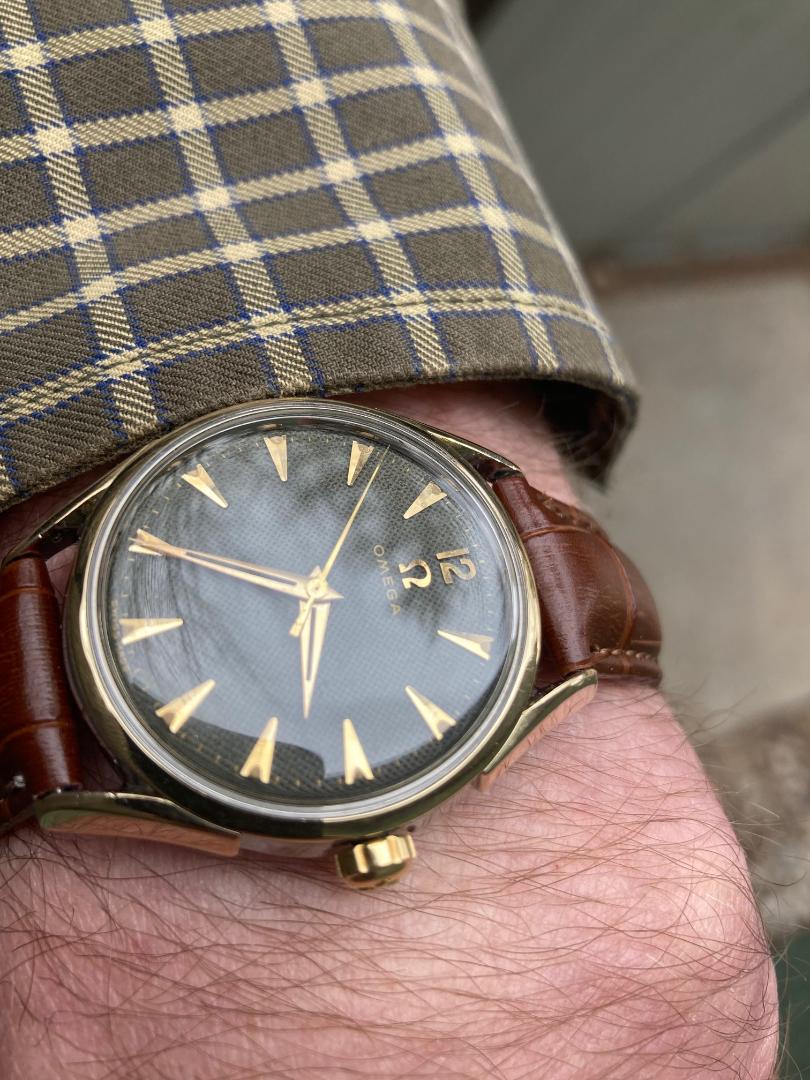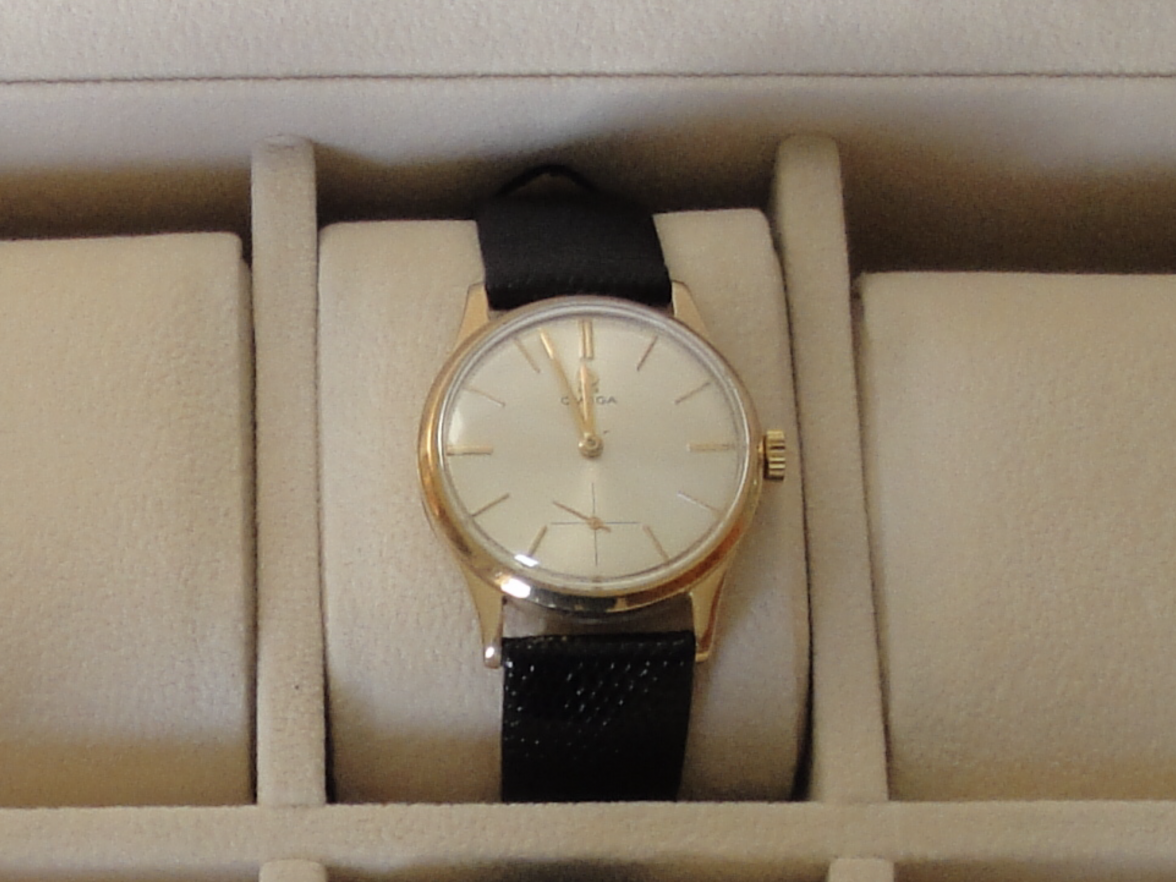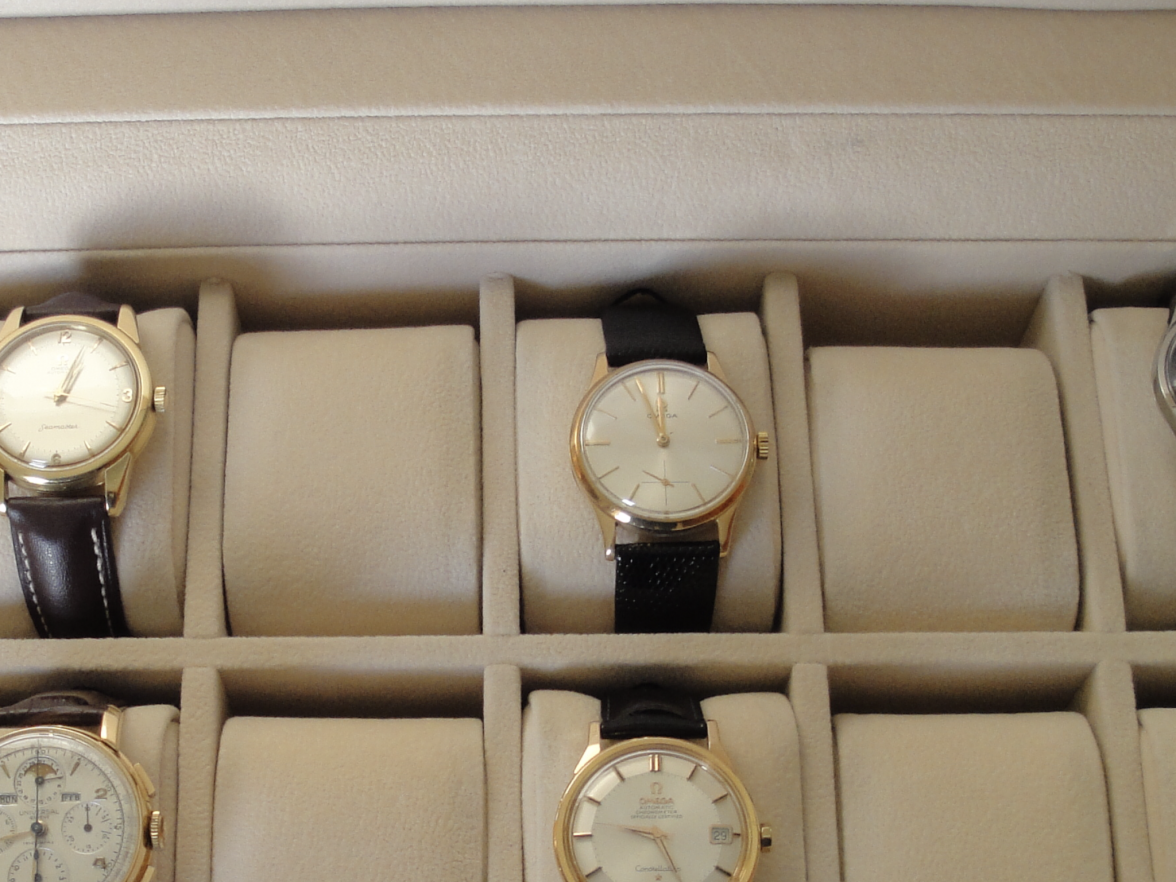deenez
·Hi all,
I’m new to the world of vintage Omega watches and I’d be very grateful to get the benefit of forum members experience and advice. I discovered the OF whilst trying to research the history of a watch I inherited from my grandfather. My grandfather passed in 2001 and the watch came into my possession in 2002. This year will be the 20th anniversary of his death and it would be a fitting tribute to return the watch to some sort of working order. The watch has lain in a presentation case in a drawer for the last 20 years, only briefly seeing the light of day every few years when I used to take it out and marvel at its beauty.
I have put together bits and pieces of information below which is a mix of material I already knew plus some newly discovered pieces from various internet sites, so if there are any errors in what I have interpreted below, they are mine alone. So, whilst acquainting myself with your forum, I noted the helpful ‘sticky’ post concerning enquiries, so I have followed the suggested format.
What Can You Tell Us?
My grandfather wore this watch up until the day he passed, so it was working in 2001. Unfortunately I do not know when it was last serviced, if ever, though he kept it in working condition so I assume it must have been at some stage. He owned it from new, so probably from the early 50s. As far as anyone knows it contains the original parts - though more than happy to be corrected on this point. I have posed a related question on this point later in the post.
Case - 9ct gold Dennison. Hallmark stamp dates it to 1951/52. Size, appears by my imprecise measurement (a ruler), to be 33mm including crown. Case number from the case back is 439965. Last three digits (965) are also stamped into the 9ct main case frame. Tool marks are obvious on the case opposite the crown once the back is removed. Currently the case back can be removed with care using just a fingernail, and snaps shut again with ease. I have only lightly polished the case with a microfibre cloth to remove obvious signs of tarnish.
Dial - appears to be off white with gilt arrow head indices, and Dauphine hands. Numerals appear to be painted flush with the dial surface in gold outlined in black. They do not appear to be actual manufactured numbers stuck to the dial giving a raised appearance as I have seen in some other sub second dials of this vintage. The dial appears to be in generally good condition to the naked eye but there are age spots (patina?) at various positions on the outer edges of the dial when viewed with an optical device capable of magnification. These are most visible as ‘smudges’ between the 10 and 11 and 7 and 8 positions.
Crystal - appears in generally good condition to the naked eye, but scratches to the outside edge of the dome cast shadows onto the off white dial giving the appearance of a defect on the dial. This is most obvious as a ‘thin line’ between two of the minute reference indices between the 8 and 9 position.
Movement - stamped ‘Omega’, ‘Swiss’ and ’17 JEWELS’. The serial number is 11032479 that probably dates the movement to late 1947 or early 1948, depending on what website you visit. One of the case screws appears to be badly corroded in comparison with its opposite number. Otherwise the movement looks clean. The movement currently does not work. The crown is stamped with the Omega symbol. The crown will rotate anti-clockwise emitting a clicking noise (to my mind a normal winding noise), but will not rotate clockwise, there is firm resistance when you test it lightly and I do not want to apply any further pressure in a clockwise direction. The crown and stem will extend to allow the hands to be adjusted manually. There is no stamp concerning the Calibre on the Barrel Bridge as I have seen in other similarly aged Omegas, though according to some internet sources this process apparently only started in the late 1940s. Some sources I have read also suggest that the Calibre may be stamped underneath the Balance wheel and assembly.
Strap and Box - the strap is obviously a replacement as it is stamped ‘Record’ and must have been replaced at some stage during its life. When I inherited the watch it came in a green ‘Record’ presentation box. As part of this years efforts to restore the watch to its former glory I have since sourced a vintage Omega box. Though whilst I appreciate this would not have matched the original box, it seems fitting that the watch should have a matching marque presentation case.
I think that is all concerning my knowledge and observations of the watch. I apologise for any errors contained therein. Why is it that just as your appreciation of the finer things in life starts to grow, your body starts to fail you. I wish I had my 20 year old eyes and my 55 year appreciation.
Before I get to my request could anyone perhaps share their thoughts on the age difference between the case (1951/52) and movement (1947/48); I have seen mention on some sites that there should maybe only be a 2 year gap and any larger period would raise questions - is this 4-5 year gap an issue and does it mean that it is probably not the original case for this movement?
How Can We Help You?
I suppose I have two requests really, a) missing factual information and b) restoration advice.
a) There are probably only two pieces of factual information missing that I would like to discover and would be grateful to know if forum members could help out.
In relation to Model Numbers, upon checking the Omega website for Vintage models I found a similar looking watch, same approximate age (1946 I think from memory) but with a steel case. I have read that the model number might be the same but with a different code for the case material. The steel model was coded CK2399. Is it as simple as inferring that my model might be OT or OJ2399 as both OT and OJ referred to solid gold cases? If it is not that simple does anyone know what the Model Number is?
In relation to the Calibre, is it possible to determine the Calibre without dismantling the Movement, and if so does anyone know what the Calibre of this watch might be? I think it is possibly a 30mm series from the 266 Calibre family but would need I think to be one of the 17 Jewelled versions of that Calibre, so a 261, 262 or a 266, 267. Again grateful for any advice anyone could share. It goes without saying I don’t have the skills, tools, or eyesight for that matter to dismantle the Movement.
b) Lastly then - Restoration. I need to get the Movement working again. I know from your helpful posts to take this to a specialist watch repairer, local or Omega affiliated and not the High Street Jewellers. I have seen an online quote for a vintage watch restoration website for a complete service for £295. This includes fully dismantling the watch to all its component parts, cleaning and close examination, checking for signs of wear and replacement where necessary with only original parts, reassembly, adjustment, testing and calibration. The site has restored a similar model of a 1953/54 9ct Omega watch with similar dial, case and movement (Calibre 266) so it appears they have the necessary skills and experience. I would be interested to know if this is a fair price or if forum members have any other thoughts on how I should proceed. Also what recommendations would anyone have for addressing the condition of dial and crystal and possible cleaning. Does it warrant a clean of the dial and a possible clean or replacement of the crystal?
Is It Owned Or Being Considered?
As you may have already discerned the watch is already owned. I have no intention of selling it, I don’t know how much it is worth and I’m not really bothered, though I will have to get it valued for insurance purposes at some stage after it is restored. It is a thing of beauty and I plan to wear it everyday once it is back up and running. It doesn’t really matter how much it costs to restore as I am committed to bringing it back to full working order and with regular servicing I should hopefully be able to pass it down to my son.
Apologies for the lengthy post and I am grateful for the time you have taken to read and respond. I have worked on the premise that full disclosure of what I know will create the best conditions to allow someone to help with my queries. I include some pictures,
Thanks
D
I’m new to the world of vintage Omega watches and I’d be very grateful to get the benefit of forum members experience and advice. I discovered the OF whilst trying to research the history of a watch I inherited from my grandfather. My grandfather passed in 2001 and the watch came into my possession in 2002. This year will be the 20th anniversary of his death and it would be a fitting tribute to return the watch to some sort of working order. The watch has lain in a presentation case in a drawer for the last 20 years, only briefly seeing the light of day every few years when I used to take it out and marvel at its beauty.
I have put together bits and pieces of information below which is a mix of material I already knew plus some newly discovered pieces from various internet sites, so if there are any errors in what I have interpreted below, they are mine alone. So, whilst acquainting myself with your forum, I noted the helpful ‘sticky’ post concerning enquiries, so I have followed the suggested format.
What Can You Tell Us?
My grandfather wore this watch up until the day he passed, so it was working in 2001. Unfortunately I do not know when it was last serviced, if ever, though he kept it in working condition so I assume it must have been at some stage. He owned it from new, so probably from the early 50s. As far as anyone knows it contains the original parts - though more than happy to be corrected on this point. I have posed a related question on this point later in the post.
Case - 9ct gold Dennison. Hallmark stamp dates it to 1951/52. Size, appears by my imprecise measurement (a ruler), to be 33mm including crown. Case number from the case back is 439965. Last three digits (965) are also stamped into the 9ct main case frame. Tool marks are obvious on the case opposite the crown once the back is removed. Currently the case back can be removed with care using just a fingernail, and snaps shut again with ease. I have only lightly polished the case with a microfibre cloth to remove obvious signs of tarnish.
Dial - appears to be off white with gilt arrow head indices, and Dauphine hands. Numerals appear to be painted flush with the dial surface in gold outlined in black. They do not appear to be actual manufactured numbers stuck to the dial giving a raised appearance as I have seen in some other sub second dials of this vintage. The dial appears to be in generally good condition to the naked eye but there are age spots (patina?) at various positions on the outer edges of the dial when viewed with an optical device capable of magnification. These are most visible as ‘smudges’ between the 10 and 11 and 7 and 8 positions.
Crystal - appears in generally good condition to the naked eye, but scratches to the outside edge of the dome cast shadows onto the off white dial giving the appearance of a defect on the dial. This is most obvious as a ‘thin line’ between two of the minute reference indices between the 8 and 9 position.
Movement - stamped ‘Omega’, ‘Swiss’ and ’17 JEWELS’. The serial number is 11032479 that probably dates the movement to late 1947 or early 1948, depending on what website you visit. One of the case screws appears to be badly corroded in comparison with its opposite number. Otherwise the movement looks clean. The movement currently does not work. The crown is stamped with the Omega symbol. The crown will rotate anti-clockwise emitting a clicking noise (to my mind a normal winding noise), but will not rotate clockwise, there is firm resistance when you test it lightly and I do not want to apply any further pressure in a clockwise direction. The crown and stem will extend to allow the hands to be adjusted manually. There is no stamp concerning the Calibre on the Barrel Bridge as I have seen in other similarly aged Omegas, though according to some internet sources this process apparently only started in the late 1940s. Some sources I have read also suggest that the Calibre may be stamped underneath the Balance wheel and assembly.
Strap and Box - the strap is obviously a replacement as it is stamped ‘Record’ and must have been replaced at some stage during its life. When I inherited the watch it came in a green ‘Record’ presentation box. As part of this years efforts to restore the watch to its former glory I have since sourced a vintage Omega box. Though whilst I appreciate this would not have matched the original box, it seems fitting that the watch should have a matching marque presentation case.
I think that is all concerning my knowledge and observations of the watch. I apologise for any errors contained therein. Why is it that just as your appreciation of the finer things in life starts to grow, your body starts to fail you. I wish I had my 20 year old eyes and my 55 year appreciation.
Before I get to my request could anyone perhaps share their thoughts on the age difference between the case (1951/52) and movement (1947/48); I have seen mention on some sites that there should maybe only be a 2 year gap and any larger period would raise questions - is this 4-5 year gap an issue and does it mean that it is probably not the original case for this movement?
How Can We Help You?
I suppose I have two requests really, a) missing factual information and b) restoration advice.
a) There are probably only two pieces of factual information missing that I would like to discover and would be grateful to know if forum members could help out.
- Model Number
- Movement Calibre
In relation to Model Numbers, upon checking the Omega website for Vintage models I found a similar looking watch, same approximate age (1946 I think from memory) but with a steel case. I have read that the model number might be the same but with a different code for the case material. The steel model was coded CK2399. Is it as simple as inferring that my model might be OT or OJ2399 as both OT and OJ referred to solid gold cases? If it is not that simple does anyone know what the Model Number is?
In relation to the Calibre, is it possible to determine the Calibre without dismantling the Movement, and if so does anyone know what the Calibre of this watch might be? I think it is possibly a 30mm series from the 266 Calibre family but would need I think to be one of the 17 Jewelled versions of that Calibre, so a 261, 262 or a 266, 267. Again grateful for any advice anyone could share. It goes without saying I don’t have the skills, tools, or eyesight for that matter to dismantle the Movement.
b) Lastly then - Restoration. I need to get the Movement working again. I know from your helpful posts to take this to a specialist watch repairer, local or Omega affiliated and not the High Street Jewellers. I have seen an online quote for a vintage watch restoration website for a complete service for £295. This includes fully dismantling the watch to all its component parts, cleaning and close examination, checking for signs of wear and replacement where necessary with only original parts, reassembly, adjustment, testing and calibration. The site has restored a similar model of a 1953/54 9ct Omega watch with similar dial, case and movement (Calibre 266) so it appears they have the necessary skills and experience. I would be interested to know if this is a fair price or if forum members have any other thoughts on how I should proceed. Also what recommendations would anyone have for addressing the condition of dial and crystal and possible cleaning. Does it warrant a clean of the dial and a possible clean or replacement of the crystal?
Is It Owned Or Being Considered?
As you may have already discerned the watch is already owned. I have no intention of selling it, I don’t know how much it is worth and I’m not really bothered, though I will have to get it valued for insurance purposes at some stage after it is restored. It is a thing of beauty and I plan to wear it everyday once it is back up and running. It doesn’t really matter how much it costs to restore as I am committed to bringing it back to full working order and with regular servicing I should hopefully be able to pass it down to my son.
Apologies for the lengthy post and I am grateful for the time you have taken to read and respond. I have worked on the premise that full disclosure of what I know will create the best conditions to allow someone to help with my queries. I include some pictures,
Thanks
D
